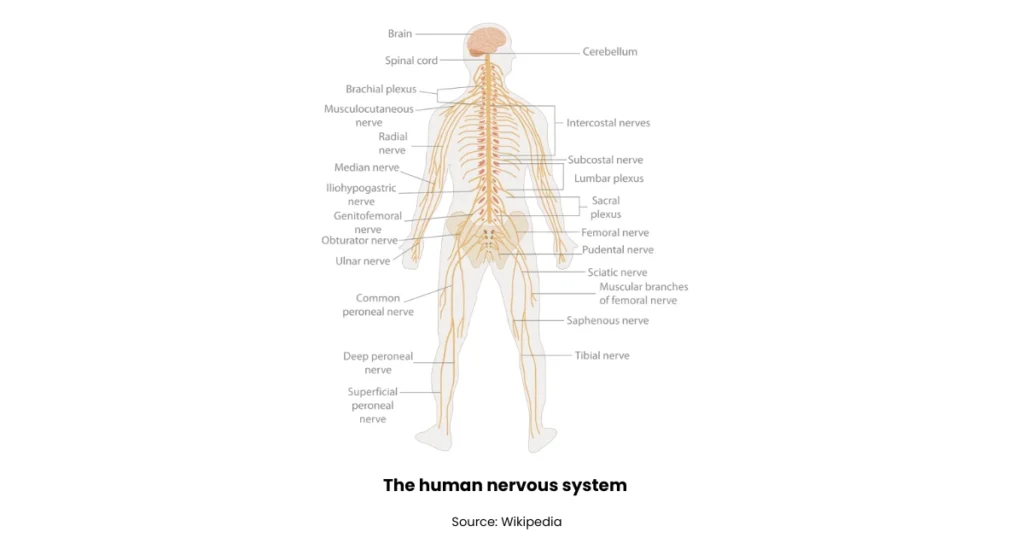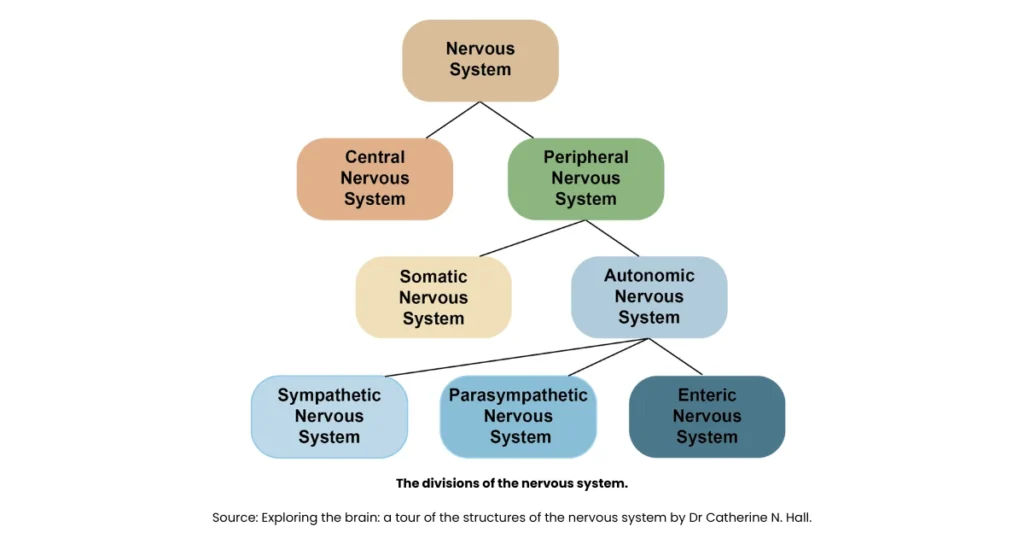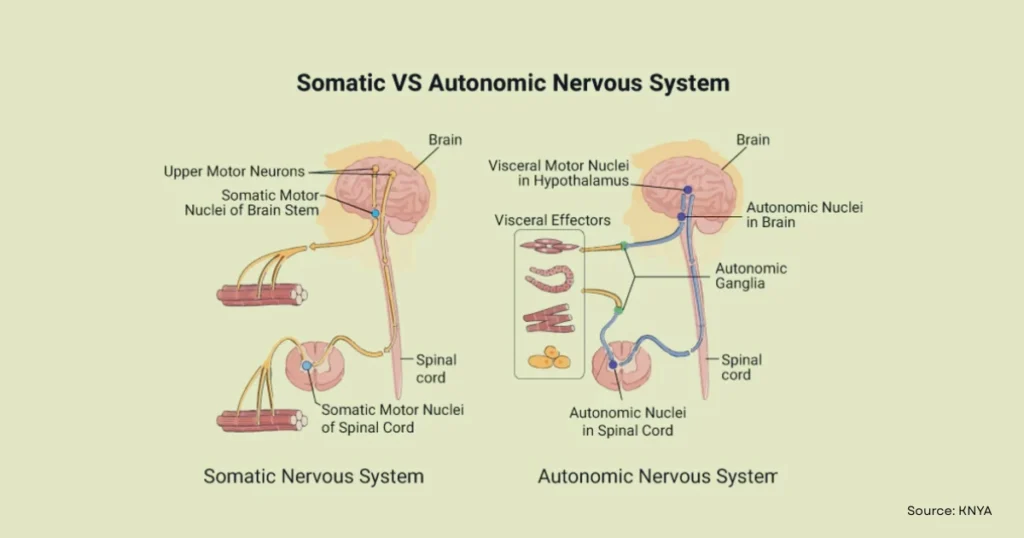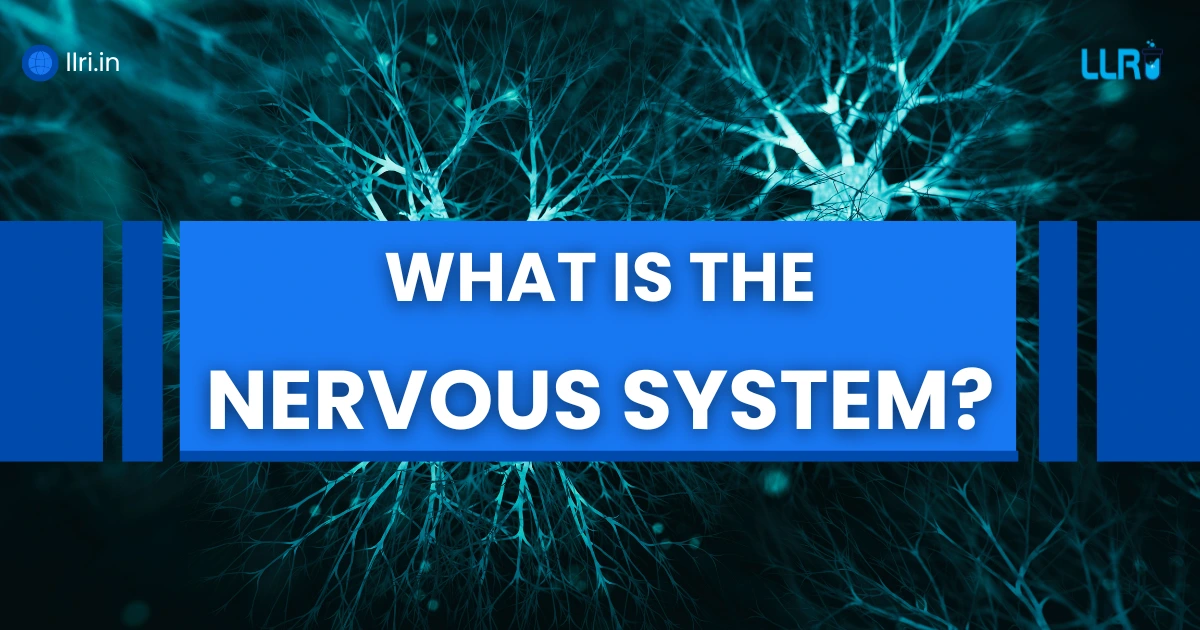What Is Nervous System: Imagine you touch a hot cup of chai. Within a split second, you snatch your hand back. But have you ever paused to wonder how this happens so quickly?
That instant action is the magic of your nervous system.
The nervous system is one of the most fascinating yet often misunderstood systems of the human body nervous system. It is your body’s very own “internet,” carrying information at lightning speed across a vast network of billions of neurons. Unlike your phone’s internet, though, this network never goes offline, it’s active even while you sleep.
So when students ask in class, “What is nervous system and why do we study it so deeply in biology?” the reply is simple: because every heartbeat, every breath, every movement, and even every dream depends on it. In fact, neuroscientists often call it the command centre of life. Without it, no other system in the body, digestive, circulatory, muscular can function properly.
Here’s another interesting thought: while you are reading these words, your eyes are capturing the letters, your brain is processing them, and your hand may be taking notes. That’s the nervous system quietly doing its job.
In this blog, we’ll cover the following major points:
- Organisation of nervous system (CNS + PNS)
- Classification of nervous system and its sub-parts
- Central nervous system function and diagram
- Types of nervous system in the human body
- Somatic and autonomic nervous system explained
- Difference between sympathetic and parasympathetic nervous system
- Symptoms of weak nervous system
- Diseases that affect the nervous system
Let’s begin this journey!

What is Nervous System?
At its core, the nervous system is a highly specialised communication network in the human body nervous system. It is made up of billions of nerve cells (neurons) and supporting cells (glia) that transmit electrical and chemical signals.
“The nervous system is like the control room of the body, sending, receiving, and interpreting messages to keep us alive and functional.”
Without this system, we wouldn’t be able to sense touch, process emotions, learn new concepts, or even maintain balance while walking.
But the question remains: how is the nervous system organised to do all this work?
Organisation of Nervous System
The organisation of nervous system is usually studied under two major divisions:
- Central Nervous System (CNS)
- Peripheral Nervous System (PNS)
Think of the CNS as the headquarters and the PNS as the messenger service that carries instructions to and from the rest of the body.
Central Nervous System (CNS)
The central nervous system function is to act as the primary control unit. It includes the brain and spinal cord.
- Brain: Controls intelligence, memory, reasoning, emotions, and voluntary actions.
- Spinal cord: Acts as a highway for signals between brain and body; also controls reflexes.
Although I can’t add images here, let’s imagine a central nervous system diagram:
- At the top sits the brain, divided into cerebrum, cerebellum, and brainstem.
- From it extends the spinal cord downwards, protected by the vertebral column.
Every signal in your body either starts from or ends in the CNS. That’s why injuries to the CNS (like spinal cord damage) can be life-altering.
Read More: What’s the Difference Between Nervous System and Endocrine System?
Peripheral Nervous System (PNS)
The PNS connects the CNS to the rest of the body. It’s like an extensive wiring network that links your muscles, glands, and organs to the brain and spinal cord.
There are two types of peripheral nervous system divisions:
- Somatic Nervous System (SNS): Controls voluntary actions (like moving your hand, writing notes, running).
- Autonomic Nervous System (ANS): Controls involuntary actions (like heartbeat, digestion, breathing).
Together, they keep you moving, feeling, and living.

Somatic and Autonomic Nervous System
The somatic and autonomic nervous system work hand in hand. While one lets you consciously move, the other quietly runs background tasks.
- Somatic = conscious movements.
- Autonomic = subconscious, automatic functions.
But the autonomic system has two fascinating sub-divisions: the sympathetic and parasympathetic systems.
Difference between Sympathetic and Parasympathetic Nervous System
Students often get confused here. Let’s make it simple.
- Sympathetic Nervous System = “Fight or Flight”
- Increases heart rate
- Dilates pupils
- Releases adrenaline
- Parasympathetic Nervous System = “Rest and Digest”
- Slows heart rate
- Stimulates digestion
- Promotes relaxation
Quick tip for exams:
Sympathetic = Stress response
Parasympathetic = Peace response
That’s the basic difference between sympathetic and parasympathetic nervous system.
Classification of Nervous System
So how do we classify it all together? The classification of nervous system can be shown like this:
- CNS – Brain and Spinal Cord
- PNS
- Somatic Nervous System
- Autonomic Nervous System
- Sympathetic
- Parasympathetic
This classification is very important for biology and medical students.
Types of Nervous System
While we broadly say CNS and PNS, many textbooks also describe types of nervous system based on functions:
- Sensory system (receives input)
- Motor system (responds to input)
- Autonomic system (involuntary actions)
This makes it easier to study how different signals are processed.
Human Nervous System Diagram
Even though we don’t have an actual picture here, imagine this human nervous system diagram in words:
- Brain at the top
- Spinal cord running downward
- Branches of nerves spreading out like a tree into arms, legs, and organs
Medical students usually memorise this visual, as it simplifies how information travels.
Symptoms of Weak Nervous System
What happens when the nervous system doesn’t function properly?
Some common symptoms of weak nervous system include:
- Tingling or numbness in hands/feet
- Muscle weakness
- Poor memory or confusion
- Frequent headaches or dizziness
- Anxiety or depression
- Difficulty in coordination
These symptoms signal that medical attention is needed.

Diseases that Affect the Nervous System
Unfortunately, many diseases that affect the nervous system can disrupt life seriously. Some of the major ones are:
- Alzheimer’s disease – memory loss, dementia
- Parkinson’s disease – tremors, movement difficulties
- Multiple Sclerosis – nerve sheath damage, muscle weakness
- Stroke – sudden brain damage due to poor blood flow
- Epilepsy – seizures due to abnormal brain activity
Doctors and scientists worldwide, including India’s AIIMS researchers, are constantly studying ways to treat and prevent these disorders.
As Dr. Reddy (Neurologist, AIIMS) notes: “Early diagnosis of neurological disorders increases treatment success significantly.”
On A Final Note…
So now, when someone asks you “what is nervous system?” you can explain confidently. It’s not just biology in books, it’s the very reason you can think, feel, and act.
From the classification of nervous system to the central nervous system function, from understanding the types of nervous system to recognising symptoms of weak nervous system, everything points to one truth:
A healthy nervous system means a healthy life.
FAQs
Q1. What is the main function of the nervous system?
To control and coordinate all activities of the body, voluntary and involuntary.
Q2. What is the difference between sympathetic and parasympathetic nervous system?
Sympathetic prepares body for action, parasympathetic helps in relaxation.
Q3. How can we strengthen our nervous system?
By eating a balanced diet, exercising, sleeping well, and reducing stress.

